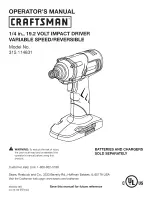
8400 BaseLine D | Software Manual
Motor control (MCTRL)
Flying restart function
98
L
Firmware 03.00 - DMS EN 5.0 - 07/2009
5.5
Flying restart function
The flying restart function works with a simple asynchronous motor model which requires
the knowledge of the stator resistance RS and the rated motor current. In order that the
flying restart function works properly, we recommend to carry out a parameter
identification before using the function.
Automatic motor parameter identification
The flying restart function works safely and reliably for drives with great centrifugal
masses.
Tip!
• When power-adapted standard asynchronous motors are used (rated motor
power approximately corresponds to the rated inverter power), a motor
parameter identification is not required.
• In connection with the flying restart function, we recommend to read the
information given in this manual in the chapter
Automatic DC-injection braking (Auto-DCB)
5.5.1
General information
This function serves to activate a mode which is used to "catch" a coasting motor during
operation without speed feedback. This means that the synchronicity between controller
and motor must be adjusted to achieve a jerk-free transition to the rotating machines in
the instant of connection.
The frequency inverter detects the synchronicity by identifying the synchronous field
frequency.
Duration
The "catching" process is completed after approx. 1 ... 2 seconds.
Overview of the relevant parameters
Note!
• Do not use the flying restart function if several motors with different
centrifugal masses are connected to a controller.
• After the controller is enabled, the motor can start for a short time or reverse
when machines with low friction and low mass inertia are used.
Parameter
INFO
Activation of flying restart function
Selection of the flying restart function
Selection of the starting frequency
Current injection for the flying restart process
















































